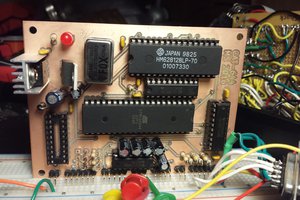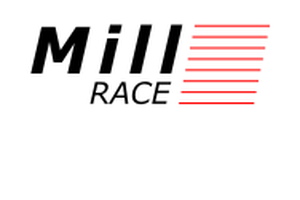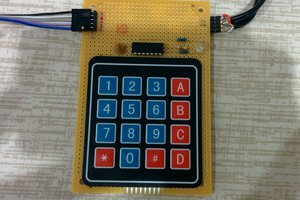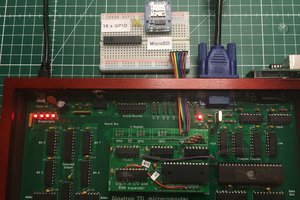The EF9345 is one of the strangest mostly text mode video cards of the era, with multiple video memory banks, mixed text and user defined graphics, as well as being able to do half width double colour characters anywhere on screen. It's not able to do full graphics but can do block graphics and character based bitmap and colour graphics.
The chip is also plentiful. As I understand it this was the chip connected to an 805x microcontroller than was used in all the minitel terminasl. In addition the output side of it is straight TTL RGB with separate or mixed sync;. That conveniently means that the total amount of electronics required on the video output side is a DB9 connector.
The device expects a multiplexed bus, but there is a reference implementation in the application notes for nailing it to a Z80 style bus as a pair of I/O ports and this is what is used.
The address decode functionality from the application note is quite clever. A 74HCT138 is used to turn reads and writes to two addresses
with the low bits 0 and 2 in this case into what the EF9345 thinks is a multiplexed bus transaction.
Writing to the first port causes O0 to pulse low which pulses AS high and latches the data as the "address". Writing to port 2 causes
RW to pulse low and latches the data bus as the data completing the cycle. A similar process occurs on the read side where it instead pulses DS.
The chipset supports both NTSC and PAL as well as separate or combined sync pulses. The latter makes it very easy to plug in converters for SCART, for composite and or svideo signals. It can also be fed directly into a VGA scaler, but note that most of them expect lower voltages so stick 1K resistors in series with the colour and sync signals.
For SCART 220ohm should work and if you use the combined sync option then you don't need any other electronics (although it won't autodetect without a separate voltage supply)
 EtchedPixels
EtchedPixels
 Mars
Mars
 Justin Skists
Justin Skists
 matseng
matseng
 Marcel van Kervinck
Marcel van Kervinck